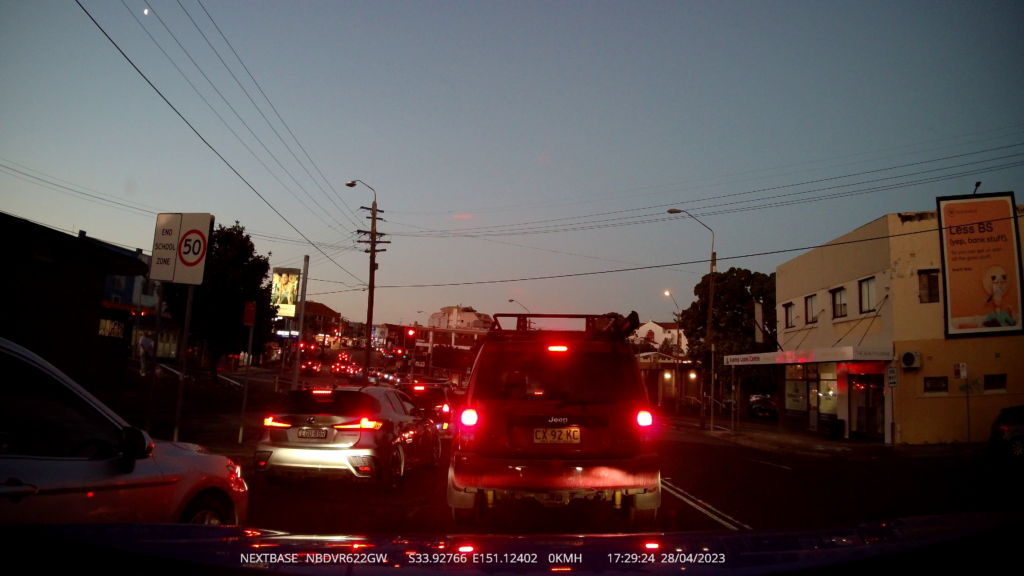If you’ve just bought a new EV and don’t think you need a dashcam, take a minute to watch some example dashcam footage recorded by Aussie drivers recently.
After that you’ve watched the video you’ll realise that it is important to have footage recorded while you’re driving in case something falls on the road and damages your car, another car crashes or bumps into you, someone with road rage damages your car etc etc.
If you’ve decided to buy a dashcam you need to decide what video quality level it will have.
While a lot of people use cheap 1080p (2 megapixel) HD resolution dashcams, these may not have enough detail in the video to see a licence plate or other identifying information clearly.
I think a good minimum is 1440p (4 megapixel) resolution and if you can afford it 4K (8 megapixel) is even better.
Frame rate is also important, 30FPS is not going to capture as much information about a fast moving object as 60FPS or 120FPS.
Of course the trade off is that higher megapixel resolution and higher FPS both eat up storage space much faster so you’ll need a bigger micro SD card for those settings.
Generally the higher the resolution and the more features, the more expensive a dashcam will be.
If you only have one dashcam, installing it on your front windshield looking forwards is the best idea.
Place your dashcam high on the windshield and as close to the centre as possible. Look at the recorded footage and make sure nothing is in the way eg: a toll etag.
Even better if you can get a second dashcam pointing backwards out the rear window, that will capture video if someone rear ends your car.
The example photos below are single frames taken from 4K dashcam footage recorded by my Nextbase 622GW model dashcam. None of the cars in the images were doing anything wrong, they’re just examples so you can zoom in and see details.




The 622GW has some features that I find useful eg:
- Intelligent Parking Mode (G force bump sensor) powered by an internal battery so I don’t need to hardwire it
- What3words location sharing so you can tell emergency services exactly where you are – even if you’re offroad.
- Suction cup or 3M film windshield attachment
- Ability to plug in a secondary rear window zoom cam or cabin view cam into the front facing dashcam
- Alexa voice control built-in
- Transfer footage fast to my phone via the MyNextbase Connect Mobile App
I think it’s useful to have the dashcam embed the date, time, GPS location and your current speed in the video footage as that evidence can be used to help you prove where you were, how fast you were driving etc at the time of an incident.






As you can see my dashcam does a pretty good job capturing a wide angle and as many details as it can.
However even if you have a 4K dashcam don’t expect miracles.
One issue I’ve encountered is highly reflective licence plates in bright sun or when car headlights are pointed at a particular angle become unreadable.
Another one is how clean your windshield is and if it has a chip protection film applied to it as either of these can reduce dashcam video quality.
Be aware that if your dashcam has a polarising filter that means it will help reduce glare during daytime video but when it is dark the polarising filter will slightly reduce the amount of light that the image sensor receives when recording.
Unfortunately there is no perfect solution for this, you either use a polariser and have better daytime footage or don’t have a polariser and get better night time footage.
Some other aspects to consider are:
- Screen size – bigger dashcam screens are easier to watch footage on without needing to transfer to a phone
- App & built-in WiFi – so you don’t have to put the dashcam micro sd card into a computer to view video or photos
- Microphone – if your dashcam has one see if it has an on/off setting. You and your family members may not want personal conversations recorded
- If you don’t like the dashcam power cable hanging down, pay for it to be professionally installed rather than DIY where you could accidentally interfere with airbags. This is especially important if you have a car that is still covered by warranty
- Night vision – will be best for dashcams that have the newest best quality image sensor eg: Sony Starvis 2
- Image stabilisation – if it is digital then what you gain in stable footage you will lose in lower video resolution

Leave a Reply